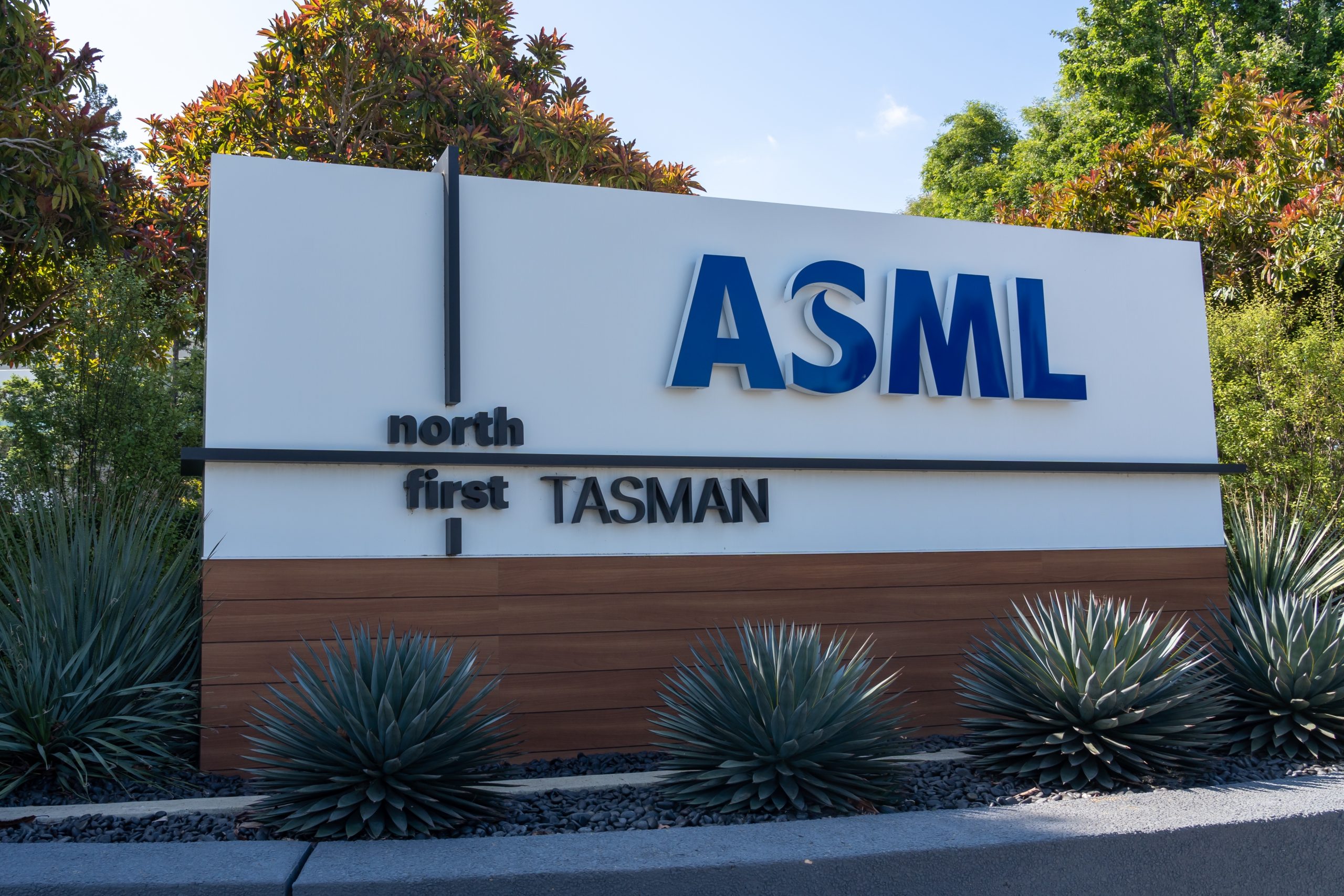
ASML beats forecasts with $6.4b in orders as AI fuels chip demand
ASML Holding NV reported €5.5 billion (US$6.4 billion) in order bookings for the second quarter of 2025.
This figure exceeds analysts’ expectations of €4.8 billion (US$5.23 billion), according to a statement released on July 16, 2025.
The Dutch company, which manufactures advanced chip-making machines, is experiencing increased demand due to investments in AI infrastructure.
ASML is the only producer of extreme ultraviolet lithography machines, essential for creating chips used in AI data centers, including those from Nvidia Corp.
.source-ref{font-size:0.85em;color:#666;display:block;margin-top:1em;}a.ask-tia-citation-link:hover{color:#11628d !important;background:#e9f6f5 !important;border-color:#11628d !important;text-decoration:none !important;}@media only screen and (min-width:768px){a.ask-tia-citation-link{font-size:11px !important;}}🔗 Source: Bloomberg
ASML’s unique position as the only manufacturer of extreme ultraviolet (EUV) lithography machines gives it extraordinary leverage in the AI semiconductor boom.
The company shipped just ten EUV scanners in 2017 and expected to double this number in 2018, showing the gradual scaling of this critical technology1.
These sophisticated machines, which can cost over $100 million each, are essential for producing the cutting-edge chips powering AI infrastructure like Nvidia’s processors mentioned in the original article2.
This monopoly helps explain why ASML’s order bookings could surge to €5.5 billion despite the CEO’s comments about “increasing uncertainty,” as the company faces no direct competition in the most advanced segment of chip manufacturing equipment.
The EUV lithography market itself is projected to grow from approximately $12.18 billion in 2024 to between $22.69-32.82 billion by 2029-2032, reflecting the critical nature of this technology32.
ASML’s results highlight a growing divide in the semiconductor industry between AI-focused companies experiencing strong growth and traditional segments facing slower recovery.
The company specifically noted in earlier statements that there is a “clear divide between companies benefiting from AI and those that are not,” explaining the mixed signals in their outlook4.
This bifurcation is further evidenced by market projections showing high bandwidth memory (HBM), critical for AI applications, growing at 66.3% in 2025, far outpacing overall semiconductor growth of 11.2%56.
Deloitte’s analysis reinforces this trend, projecting that generative AI chips alone will account for over $150 billion in semiconductor revenue in 2025, driving substantial portions of the industry’s growth6.
Despite ASML’s CEO noting a “slow recovery in the chip market extending into 2025,” the company’s strong order bookings demonstrate how AI demand is creating exceptions to broader market conditions4.
ASML’s cautious outlook for 2026 reflects how geopolitical factors are creating uncertainty even amid strong AI-driven demand.
The company previously warned about risks from tariffs and changing trade policies, particularly those affecting China, which align with the CEO’s current concerns about “increasing uncertainty driven by macro-economic and geopolitical developments”4.
This tension is exemplified by China’s reported efforts to develop its own EUV lithography technology by 2025, a direct response to being restricted from accessing ASML’s advanced machines7.
The World Semiconductor Trade Statistics shows regional growth disparities, with the Americas projected to grow at 18% compared to Asia Pacific at 9.8%, highlighting how geopolitical factors are reshaping traditional market patterns5.
Multiple industry reports consistently identify geopolitical tensions as a significant risk factor for the semiconductor industry, with companies increasingly focused on supply chain resilience despite strong underlying demand68.
Read full article on Tech in Asia
Technology Business
Comments
Leave a comment in Nestia App